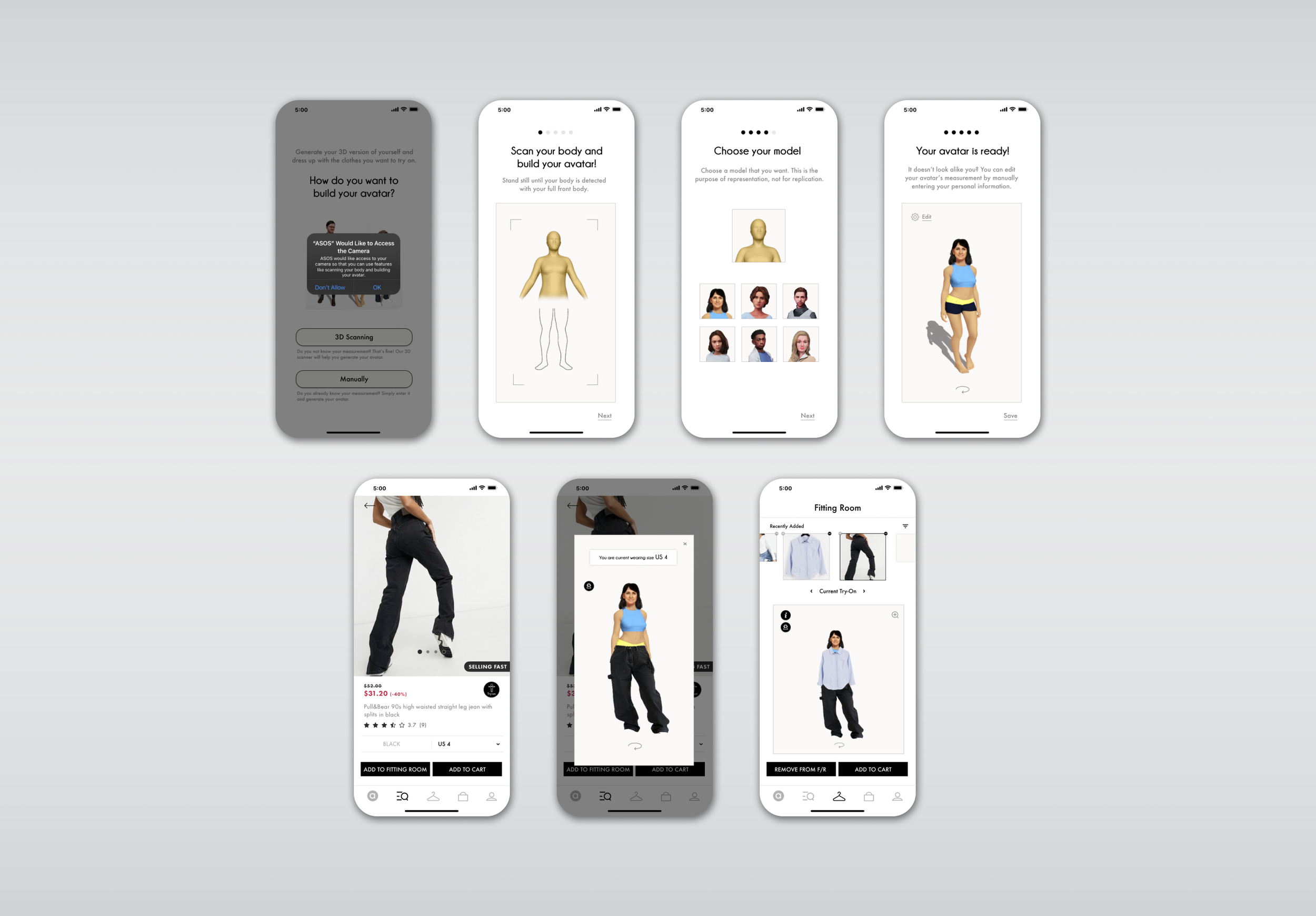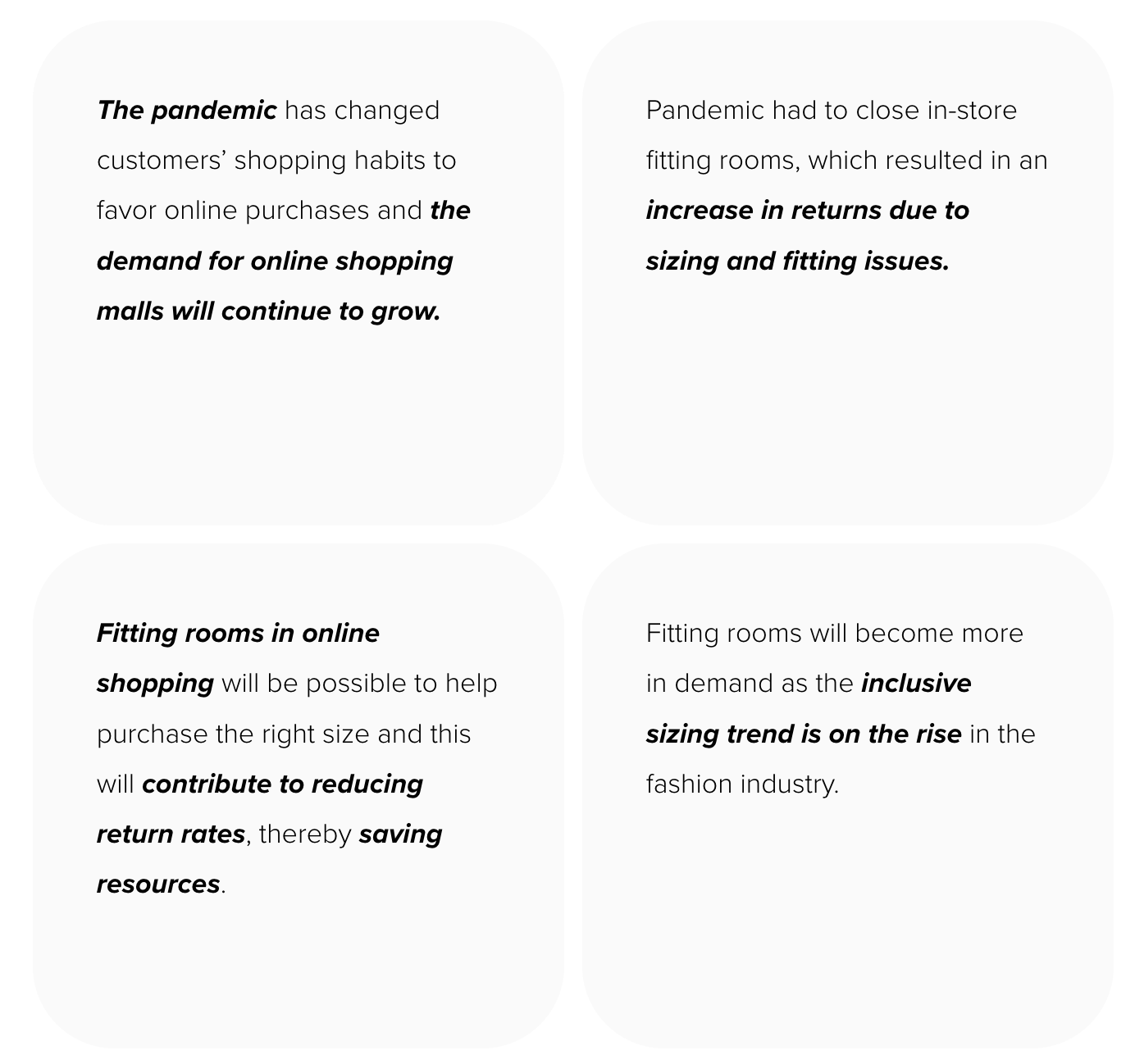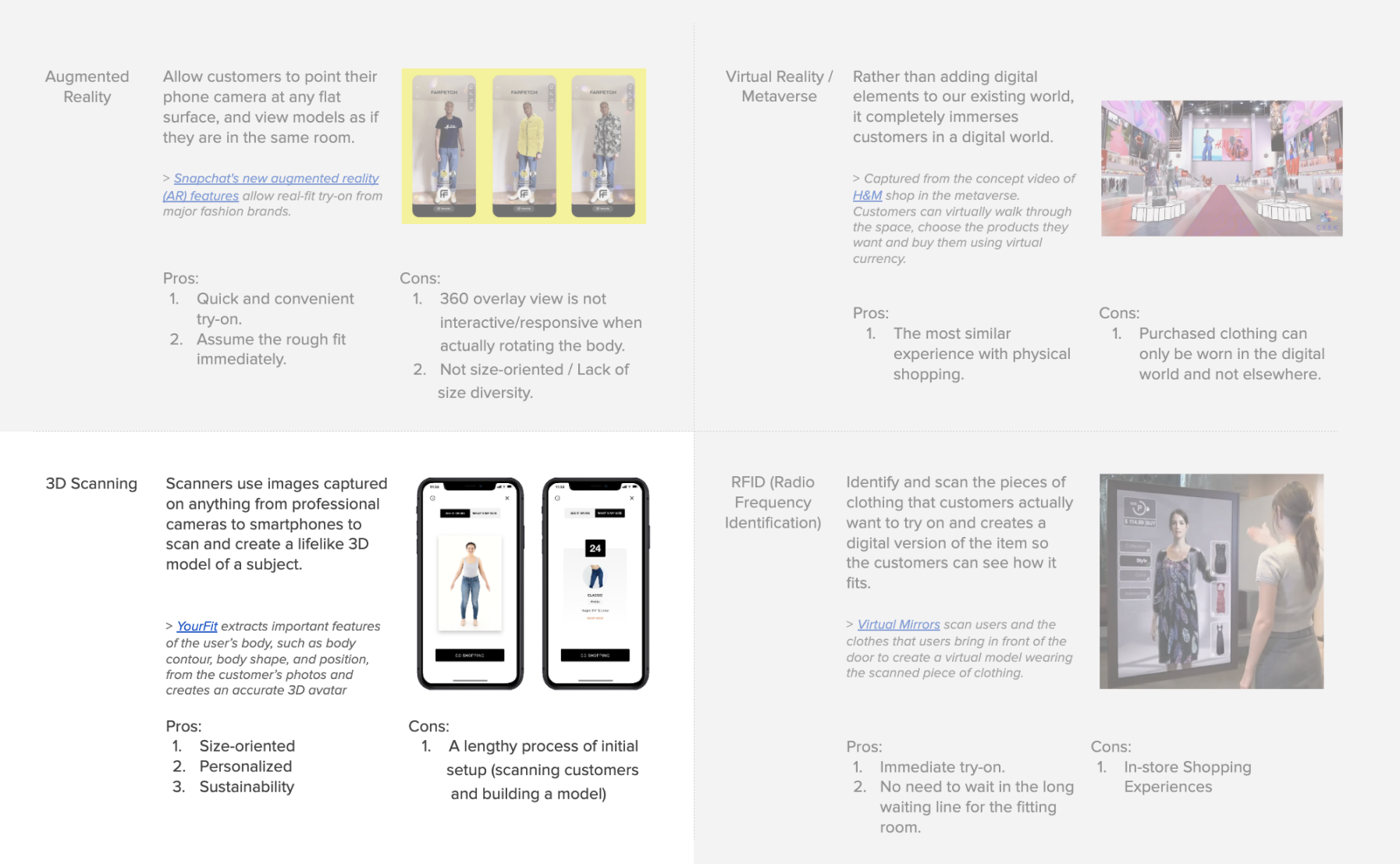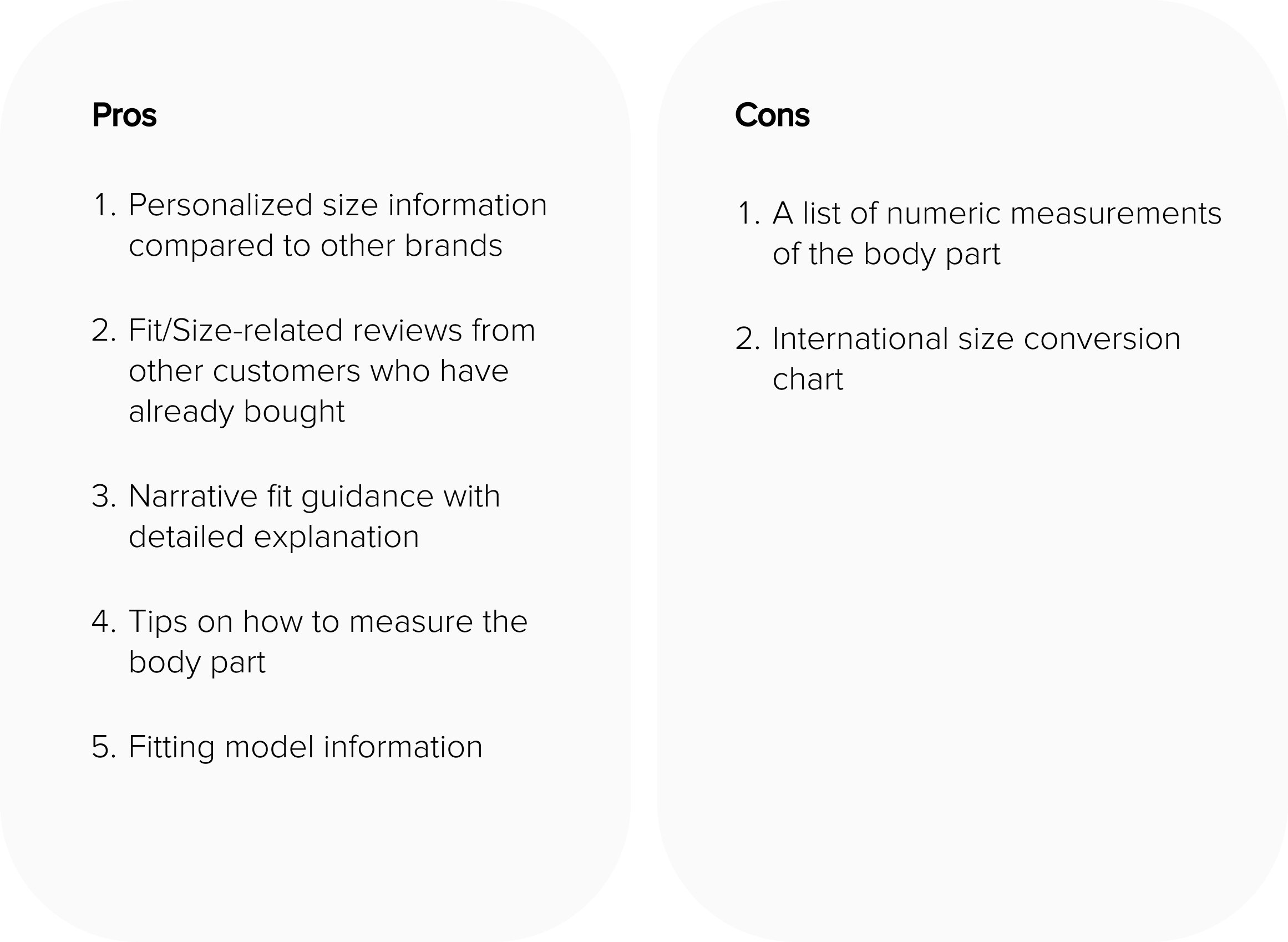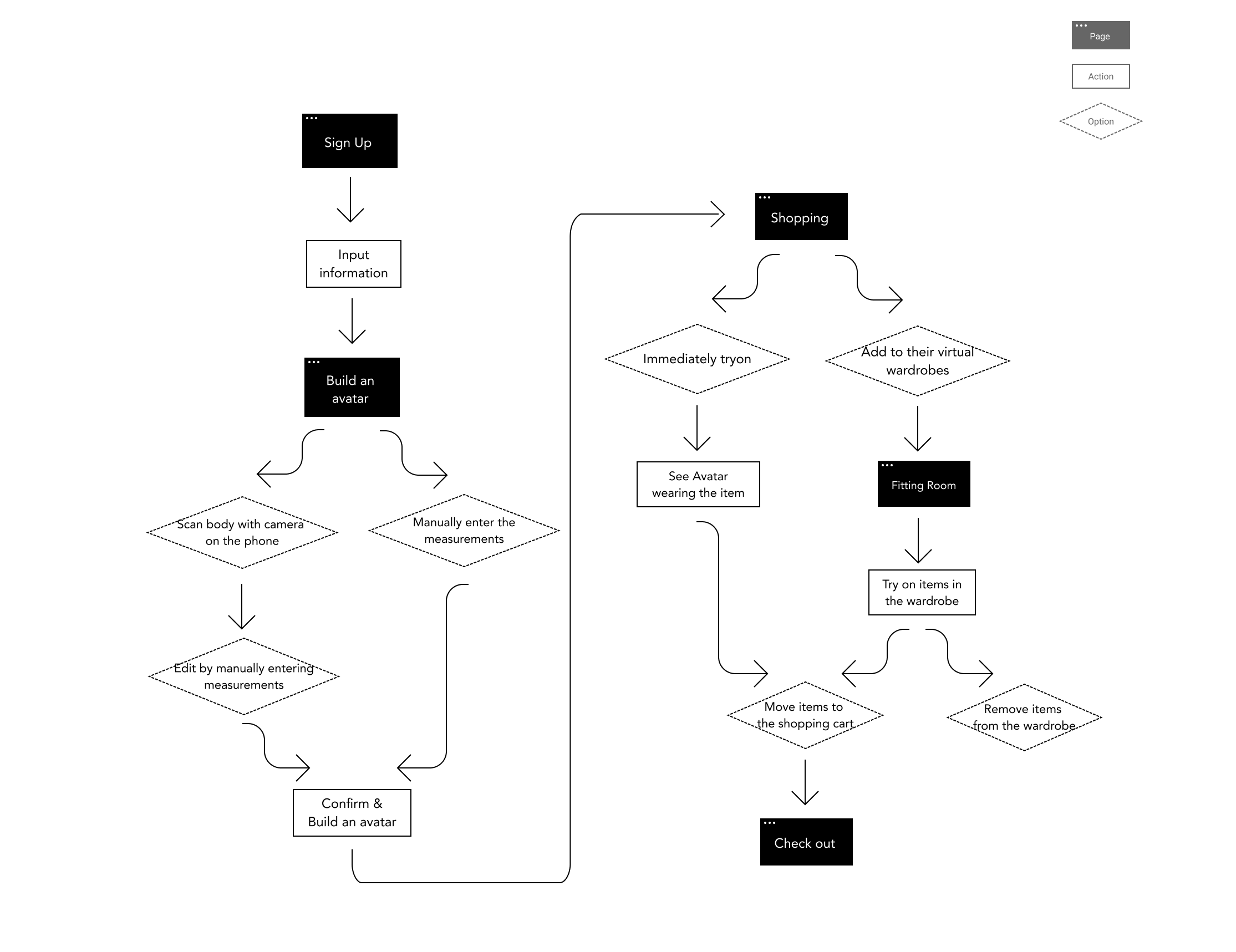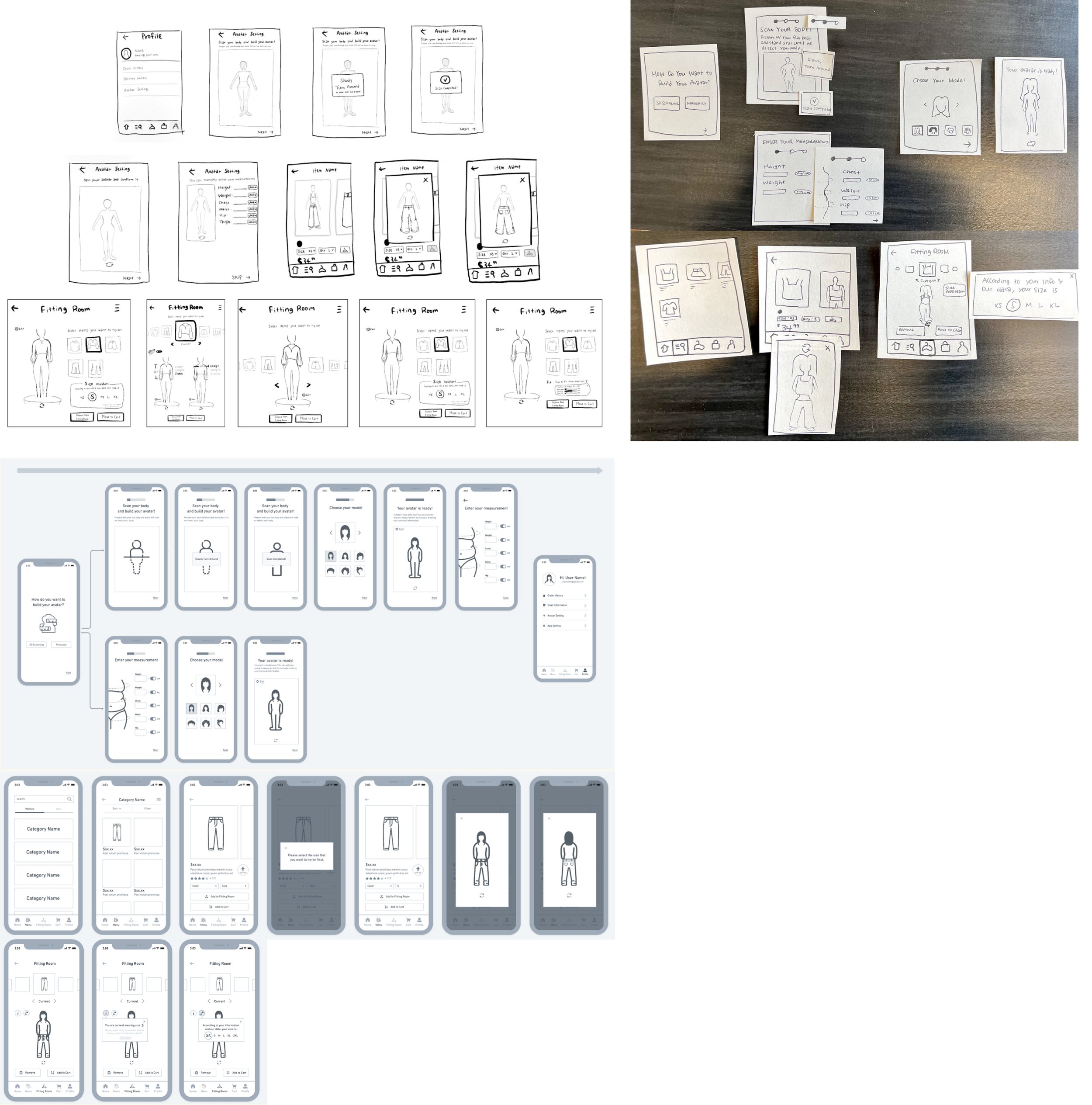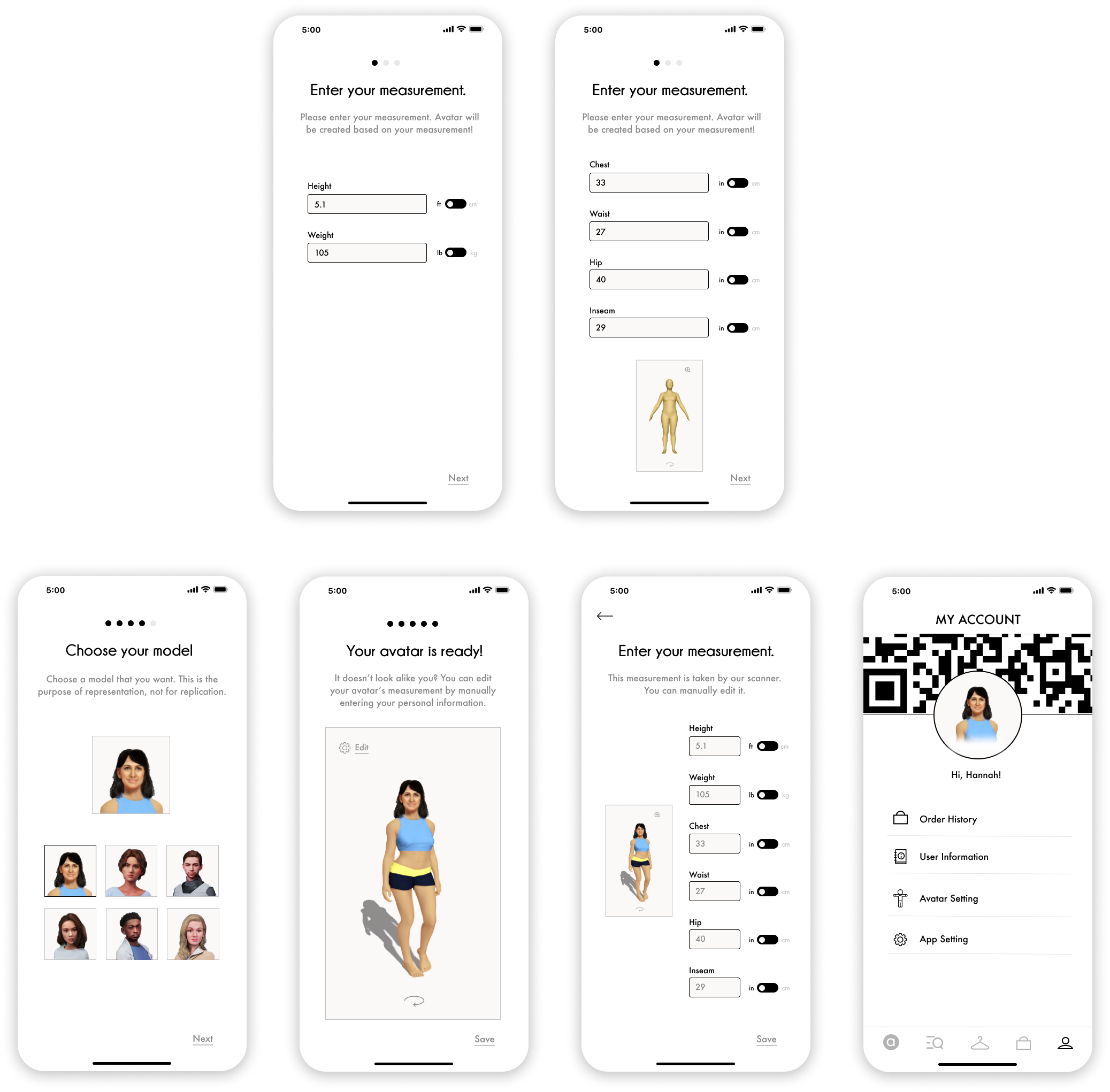A Virtual Fitting Experience for Inclusive Size
Overview
This is an individual project involving extensive research and prototypes for virtual fitting experiences within a mobile clothing app using 3d scanning and avatar creation.
Role
UX Designer
UX Researcher
Project Manager
Date
Jul’ 22 - Oct’ 22
Online shopping in the fashion industry is struggling with an increase in returns due to sizing and fitting issue. The biggest problem that shoppers have is current size-related information in online shopping malls is not helpful.
The Problem
Shoppers have a hard time getting the right size from online shopping due to vague or specific sizes such as petite, tall, and plus.
Primary User Group
Final Solution
Onboarding: Build an avatar through 3D scanning
Virtual Try-On
Virtual Fitting Room
The project was inspired by combining two different concept ideas; the imagination of what it would be like if an online shopping mall featured:
How do I get there?
02.
Avatar Dress-Up Games that I used to play as a kid.
01.
Fitting Room
Process
In order to analyze the current issues of E-commerce, particularly in the fashion industry, I conducted secondary research and a literature review. It was able to investigate the measurement/size-related issues in online shopping.
Why Virtual Fitting Experience?
In order to investigate a case study of the digital fitting room that is released/launched in the market, I conducted a literature review and comparative research. It helped me explore what types of technology can be implemented into a mobile app.
Why 3D Scanning & Avatar Creation?
There are various techniques in the current market, but I believe 3d scanning technology would be the most size-oriented and personalized technology in terms of scanning customers’ bodies and developing a bespoke model.
What are the current features of online shopping malls relating to size?
In order to investigate how current fashion and apparel websites provide size and measurement information, I conducted secondary research and a comparative analysis among 3 online store websites (Macy’s, Amazon, and Gap) which are determined top three online store websites in the Fashion segment in the U.S. in 2020, by e-commerce net sales according to Statista. It helped me understand what makes customers satisfied or struggle when using size and measurement information.
As for takeaways, some useful and distracting features/information are sorted out as pros and cons:
This persona is made based on the research data and interview insights which are gathered throughout the entire project in order to help understand and represent users’ common behaviors, needs, and frustration.
User Story
In order to finalize the concept idea and confirm how the service works, I created a task flow chart. It helped me to visualize and refine the sequence of the service process.
Task Flow Chart
I developed the concept design using all the gathered data and research insights. I continuously sketched, created low-fi prototypes, and conducted concept testing. Iterative ideation helped me improve the concept design and confirm the user flow.
Ideation & Iteration
My goal was to make virtual fitting experiences accessible and prevalent. Thus, I integrated the service into the current shopping app, ASOS as part of the current shopping experience instead of creating a separate app.
Final Solution
Onboarding Type 1 : Build an avatar through 3D scanning
When users are not sure about their measurements, they can simply scan their bodies using the camera on the phone.
Then users can choose the avatar model that represents them. I made sure to let the users know the model selection is for representing users in the virtual place, not making replication of users.
Onboarding Type 2 : Build an avatar by manually entering measurements
When users already know their measurements or they feel uncomfortable scanning their bodies using the camera, users can enter their measurement information manually.
The "try-on" feature allows users to try on an item on the product detail page and immediately see how it fits.
Virtual Try-On
There are several clothes displayed in the wardrobe of the fitting room to give users more options to try on several clothes at once. There is a filter that makes users easier to sort out the items in the fitting room. It would help users to be provided with more personalized experiences by enabling them to choose the way to view items.
Virtual Fitting Room
Users can get size guidance that recommends the proper size for the user information and shopping app data itself such as reviews by clicking a certain item on the avatar.
During the project, I was pleased to design an experience/service related to our every day and provide a solution for those who typically go unnoticed. I also learned something new about the industry of size-inclusive fashion, as well as the potential use of 3d scanning and virtual avatar. Through this project, I was able to broaden my perspective and consider something deeper and wider than I might have overlooked.
Although I am pretty much satisfied with the final design, I want to make some further improvements to the final design as my next step:
Next Step & Refelection
Conduct additional testing from primary user groups.
Get more feedback on filter options for the virtual wardrobes in the fitting room.
Complement prototypes to better organize elements.
Want To Check Out Other Projects?
Future Transportation Service on Campus for Disabled Individuals
Insights + UX/UI to grow products on Amazon
Career Guidance Platform Design

